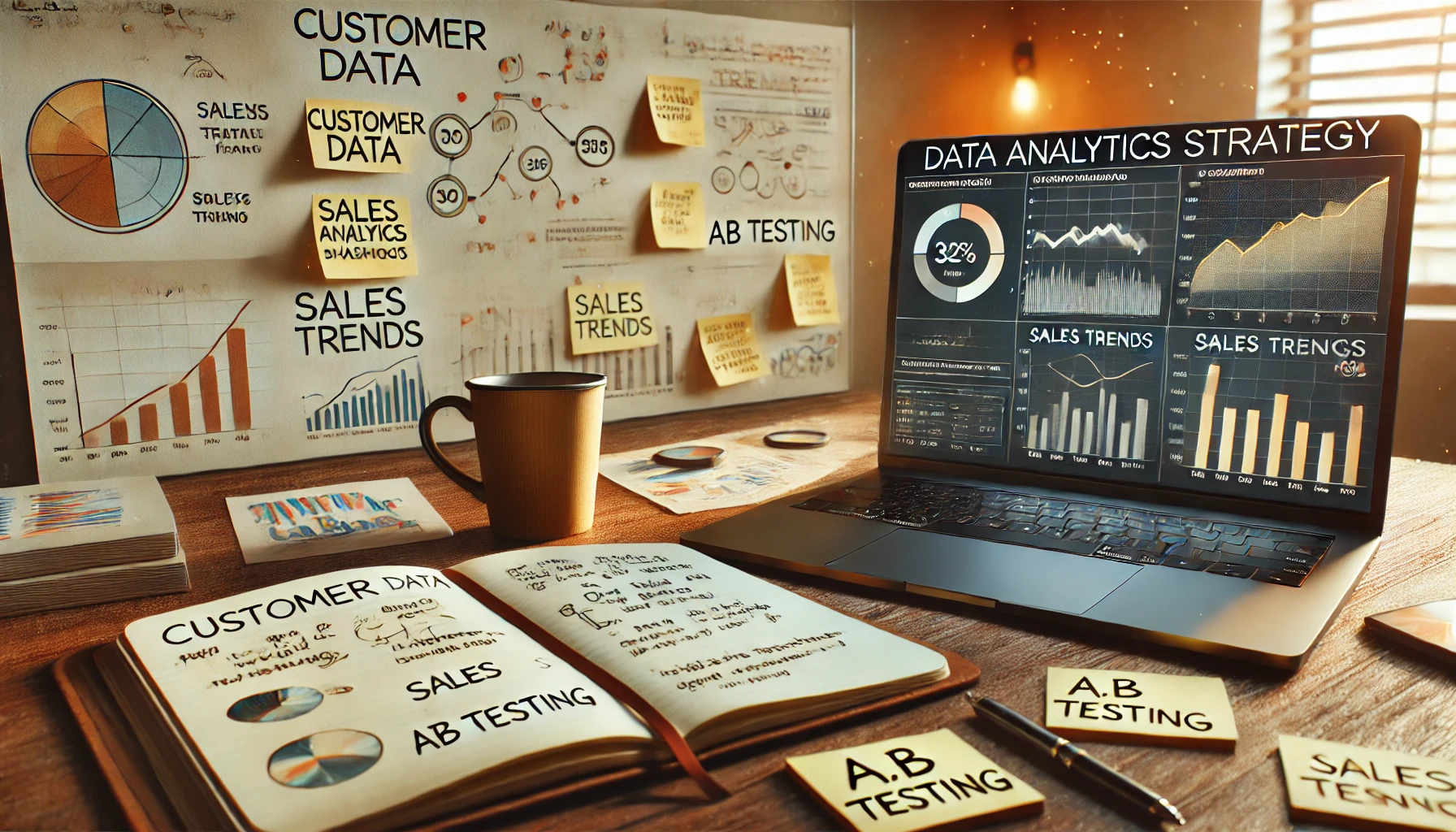In today’s digital world, data-driven decisions are key to business growth and efficiency. Whether you’re tracking customer behavior, sales trends, or marketing performance, using data analytics helps you make informed choices, reduce risks, and maximize profits.
In this guide, we’ll cover 10 essential ways to use data analytics for smarter business decisions.
1. Understand the Importance of Data Analytics
Data analytics helps businesses identify trends, optimize strategies, and predict future outcomes.
Why Data Analytics Matters:
✅ Improves decision-making with real insights.
✅ Helps reduce costs and improve efficiency.
✅ Enhances customer experience through personalized strategies.
📌 Example: An e-commerce store can analyze shopping patterns to offer personalized product recommendations.
2. Set Clear Business Goals for Data Analysis
Without clear goals, data is just numbers. Define what you want to achieve before collecting data.
Common Business Goals for Data Analytics:
✅ Increase sales and conversion rates.
✅ Reduce customer churn and improve retention.
✅ Optimize marketing campaigns for better ROI.
📌 Example: A subscription-based business can track churn rates to understand why customers cancel and improve retention strategies.
3. Collect the Right Data for Your Business
Not all data is useful. Focus on key metrics that impact business growth.
Types of Business Data to Track:
✅ Sales Data – Revenue, conversion rates, customer lifetime value.
✅ Customer Data – Demographics, preferences, buying behavior.
✅ Marketing Data – Website traffic, social media engagement, email open rates.
📌 Example: A restaurant chain can track customer purchase history to offer targeted discounts.
4. Use Google Analytics for Website Insights
Google Analytics is a powerful free tool to analyze website performance.
Key Google Analytics Metrics to Track:
📊 Traffic Sources – Where visitors come from (social media, Google, referrals).
📊 Bounce Rate – How many visitors leave without taking action.
📊 Conversion Rate – How many visitors turn into customers.
📌 Example: A travel agency can use Google Analytics to see which blog posts attract the most bookings.
5. Leverage Social Media Analytics to Improve Engagement
Social media platforms provide insights into audience behavior and content performance.
Social Media Metrics to Monitor:
✅ Engagement Rate – Likes, shares, comments.
✅ Follower Growth – How your audience expands over time.
✅ Click-Through Rate (CTR) – How many users click your links.
📌 Example: A fashion brand can track which Instagram posts generate the most sales and adjust content accordingly.
6. Improve Sales Performance with CRM Data
A Customer Relationship Management (CRM) system helps track sales leads and customer interactions.
How CRM Data Helps Sales Teams:
✅ Identifies top-performing sales strategies.
✅ Tracks customer purchase history for personalized offers.
✅ Automates follow-up emails and reminders.
📌 Example: A real estate agency can use CRM data to track which property listings get the most inquiries.
7. Optimize Marketing Campaigns with A/B Testing
A/B testing helps businesses compare different marketing strategies to find the most effective approach.
How to Conduct A/B Testing:
✅ Test different email subject lines to see which gets more opens.
✅ Compare two versions of a landing page to measure conversion rates.
✅ Run Facebook or Google ads with different headlines to see which performs better.
📌 Example: A tech startup can test two different pricing pages to see which one converts more users.
8. Use Predictive Analytics for Future Growth
Predictive analytics uses historical data to forecast future trends.
How Predictive Analytics Helps Businesses:
✅ Identifies seasonal demand trends.
✅ Forecasts future revenue growth.
✅ Detects potential customer churn before it happens.
📌 Example: A fitness app can analyze past user activity to predict which customers are likely to cancel subscriptions.
9. Monitor Financial Data for Better Budgeting
Tracking financial data helps businesses cut unnecessary expenses and increase profitability.
Key Financial Metrics to Analyze:
📊 Profit Margins – Measure the profitability of products or services.
📊 Cash Flow Trends – Identify periods of low and high cash flow.
📊 Return on Investment (ROI) – Track how well marketing and sales efforts are performing.
📌 Example: A small manufacturing company can analyze expenses to reduce production costs and increase profits.
10. Turn Insights into Actionable Strategies
Data analytics is useless unless you apply the insights to improve your business.
How to Turn Data Into Results:
✅ Set up weekly or monthly data reviews with your team.
✅ Identify actionable takeaways from reports.
✅ Continuously optimize and adjust business strategies.
📌 Example: A food delivery service noticing a high drop-off rate at checkout can improve the payment process to increase conversions.
Final Thoughts: Make Smarter Decisions with Data
Using data analytics helps businesses grow faster, make better decisions, and increase efficiency. By following these 10 strategies, you can transform raw data into actionable insights that drive real results.
🚀 Your Next Step: How are you currently using data in your business? Let me know in the comments!
